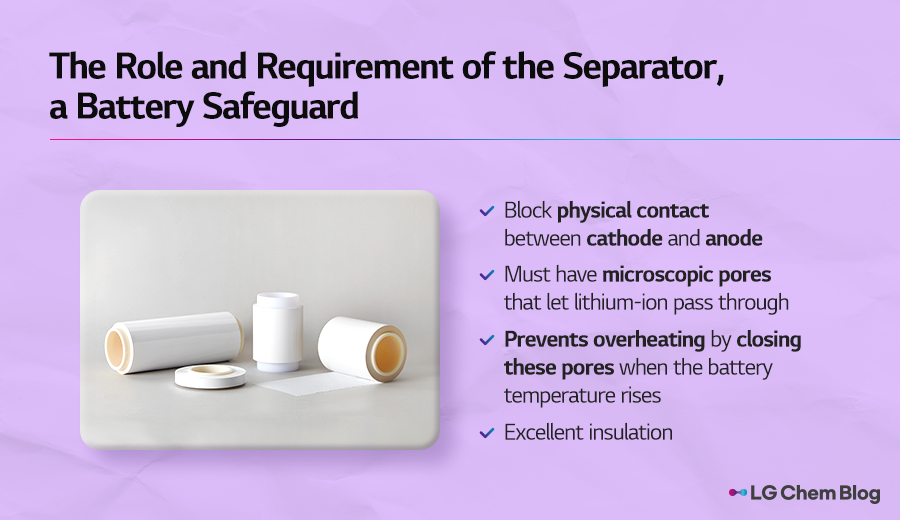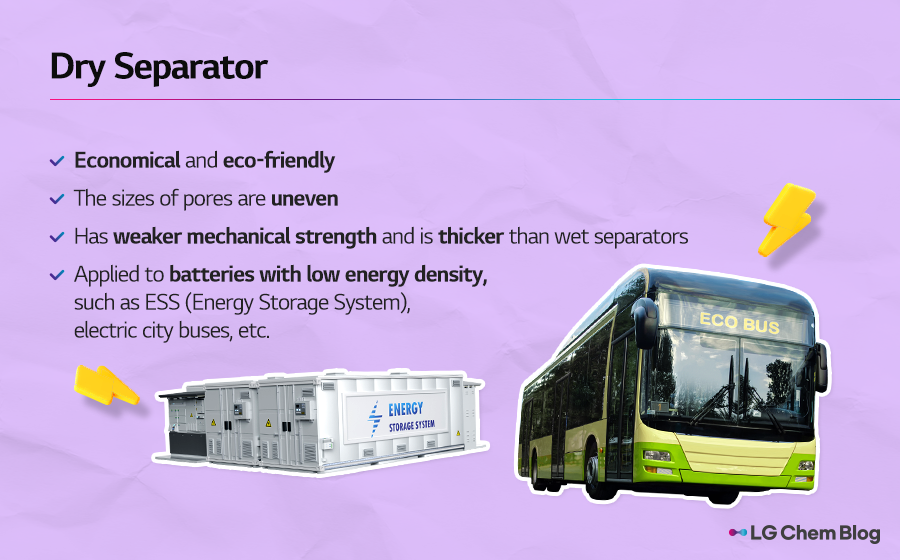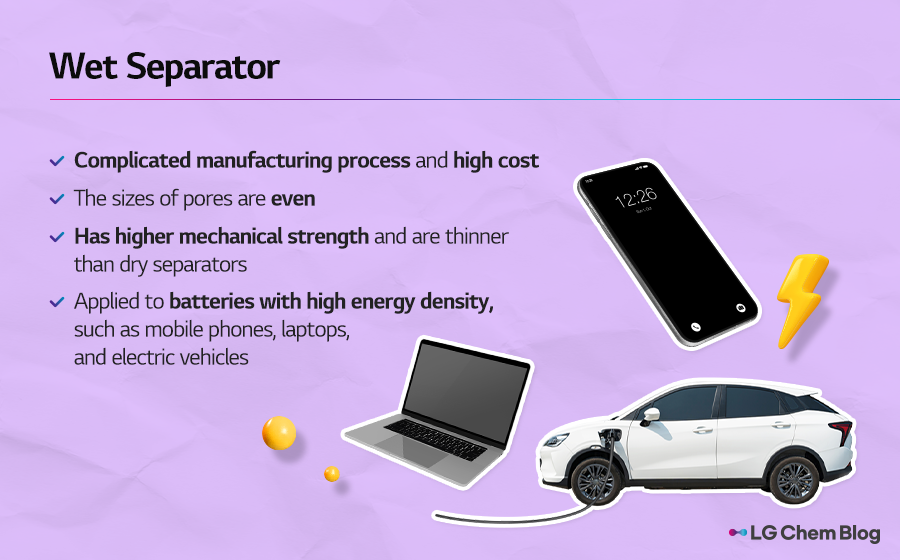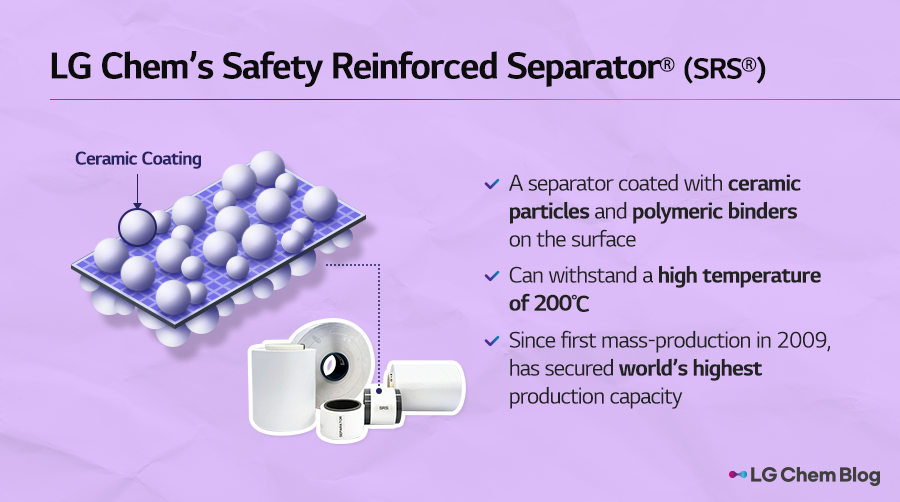FOCUS ON: Separator
2024. 06. 27
FOCUS ON: Separator
2024. 06. 27
A lithium-ion battery is composed of cathode, anode, separator, and electrolyte. If you refer to the previous ‘FOCUS ON’ where we addressed ‘high-nickel single-crystal cathode,’ cathode was introduced as the energy source of a battery, which determines the battery’s efficiency and capacity. Today, we focus on the separator, a main component of a lithium-ion battery, that prevents the contact between cathode and anode.

A separator is essential for the battery safety. Lithium-ion batteries charge and discharge by the chemical reaction occurred when lithium-ion passes through the cathode and anode. Yet, direct contact between cathode and anode may cause short circuit, which can lead to safety accidents like fires. Serving as a safeguard that blocks the physical contact between cathode and anode is the Lithium-ion Battery Separator (LiBS).
While preventing the cathode and anode contact, it’s important to secure the lithium-ion passage for a battery to charge and discharge without a problem. To do this, a separator comes with microscopic pores (air holes). These pores let lithium-ion pass through, except when the battery’s internal temperature rises to a certain extent or there is a flow of an overcurrent, when they automatically close down to block the lithium-ion passage and prevent overheating. A separator also requires high insulation so that it does not react with lithium-ion inside the battery.
The materials used to make a separator are Polyethylene (PE) and Polypropylene (PP), etc. PE and PP are manufacturable at a low cost, easy to process, offer excellent chemical stability and mechanical properties, and are light in weight.

Depending on the manufacturing method, separators are divided into dry and wet types. Dry separators create the pores by pulling and stretching PE and PP films in one direction. Unlike wet separators, they skip the process of removing the solvent, making the manufacturing process comparatively simpler. It is also eco-friendly, since it does not emit harmful substances. Yet, there is a challenge of making the sizes of pores even. Plus, dry separators have weaker mechanical strength and are thicker than wet separators, which limits their application to batteries with low energy density, such as Energy Storage System (ESS), electric city buses, etc.

On the other hand, wet separators create the pores by mixing PE and PP with paraffin oil at a high temperature, slowly hardening the sheet extruded at a high temperature · pressure, and extracting the oil filled in between the gaps of the films. Wet separators have a complex manufacturing process, and require a lot of materials to produce them, resulting in higher cost. However, the sizes of pores are even. Plus, they come with higher mechanical strength and are thinner than dry separators, securing higher energy density. Thus, they are mostly applied to fields that need high capacity · power batteries, such as small batteries like mobile phones and laptops, and electric vehicles.

Owing to the electrification trend of the automobile industry and countries making policies to regulate internal combustion engine cars to achieve Net Zero, the transition to electric vehicles is prospected to continue. With the rising demand for EV batteries, companies are striving to overcome the limitation of existing separators that lose their durability at temperatures over 130℃, and produce separators that can maintain their stability even at high temperatures.
LG Chem has developed the ‘Safety Reinforced Separator® (SRS®)’, which can withstand heat of over 200℃ by coating ceramic particles and polymeric binders on the surface of the separator. Since its first mass-production in 2009, LG Chem has continued to enhance their production speed, securing world’s highest coating production capacity.
Today, we looked into separators, an essential component that secures a battery’s safety. Even at this moment, companies are continuing their efforts to develop separators with high heat-resistance, along with researches to create thin separators that secure high energy density, which is a direct factor affecting an EV’s mileage. Please keep your support for the bright future of separators, as they make further improvements.

There are no comments yet! Be the first to let us know your thoughts!